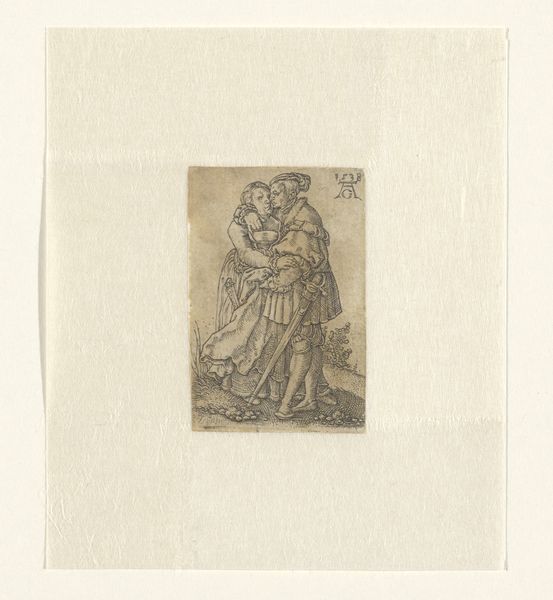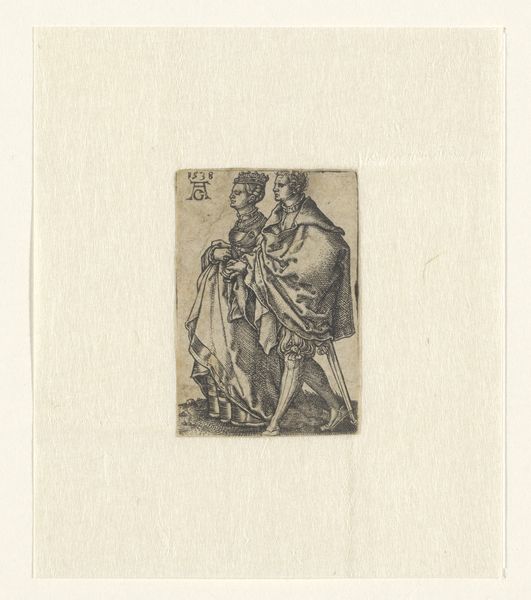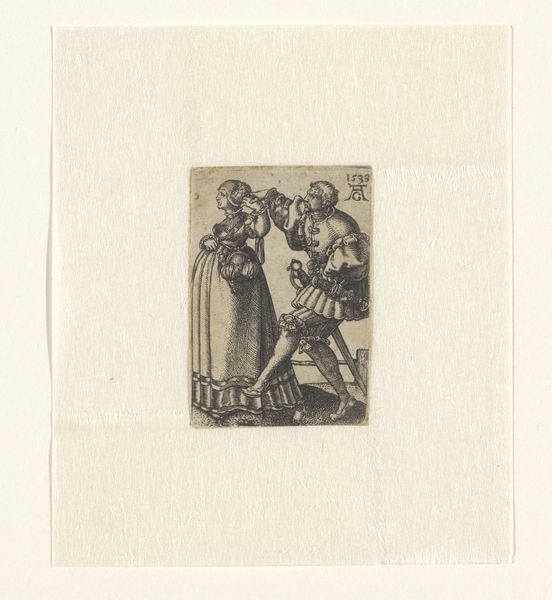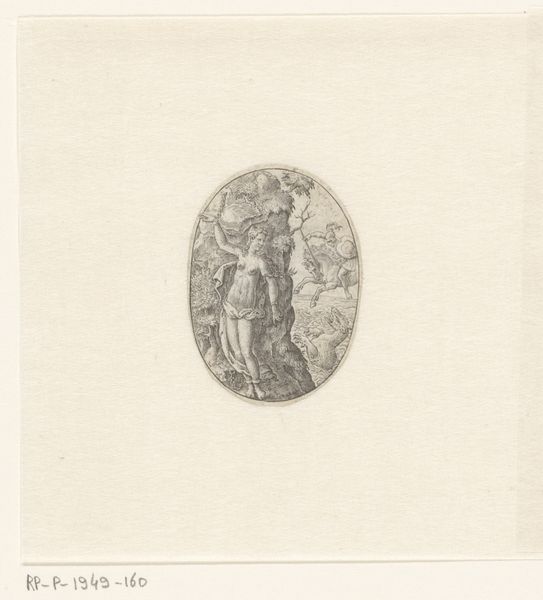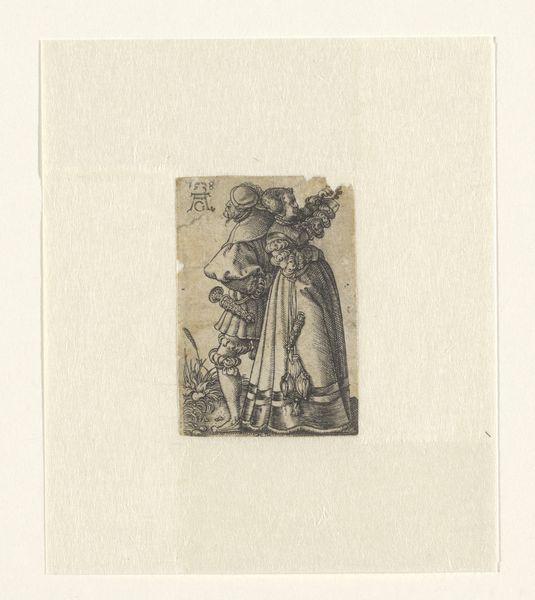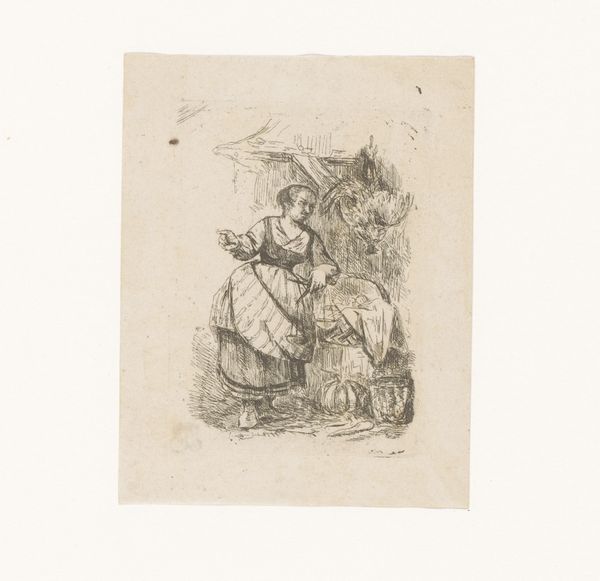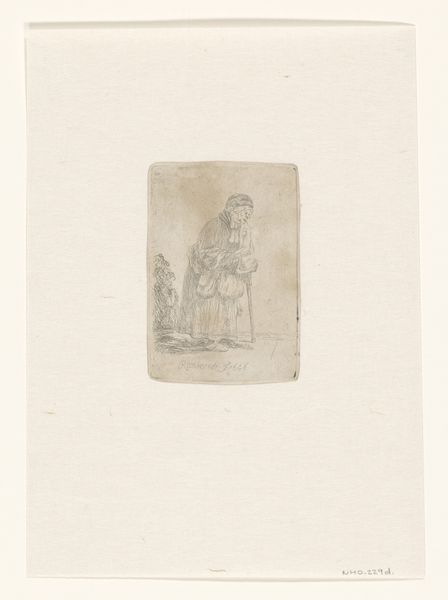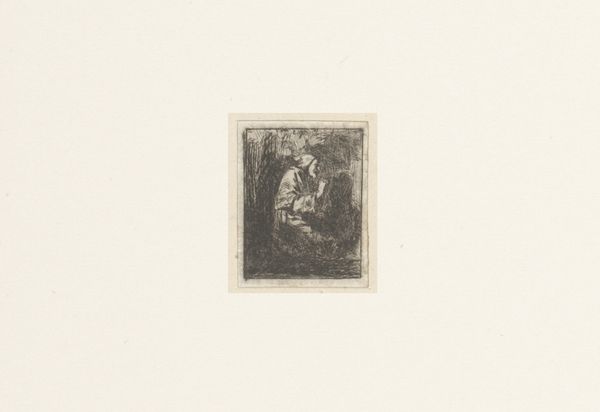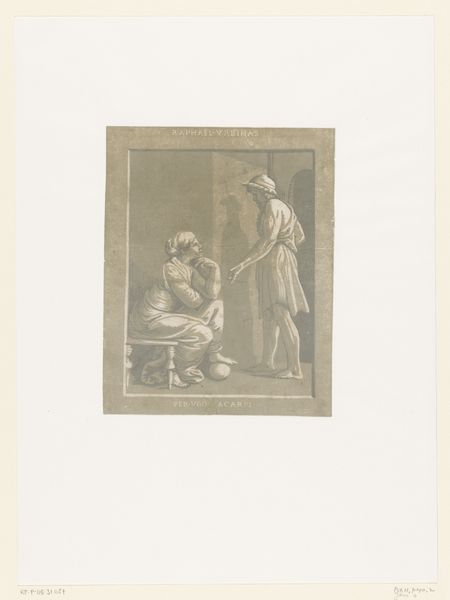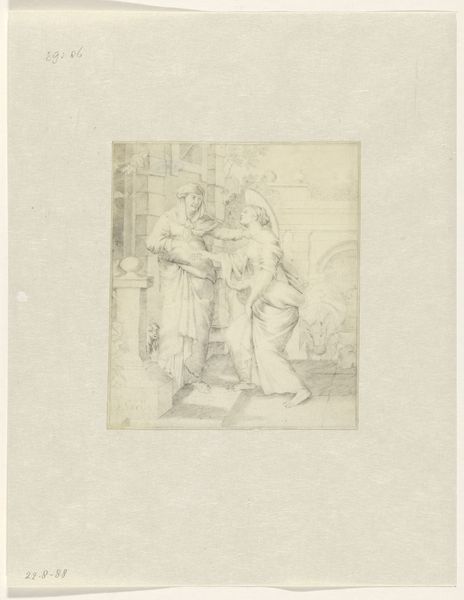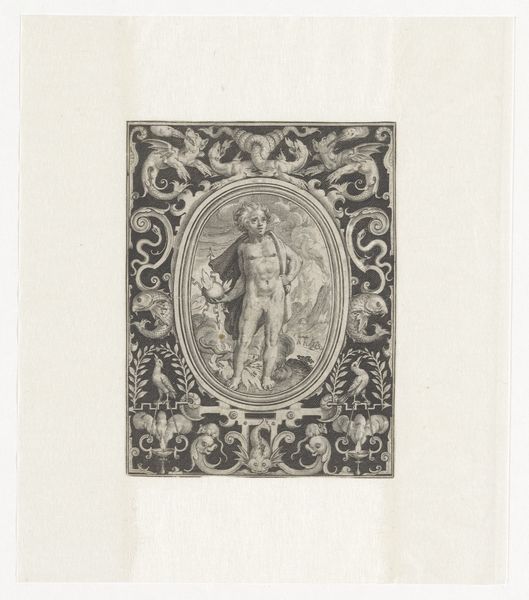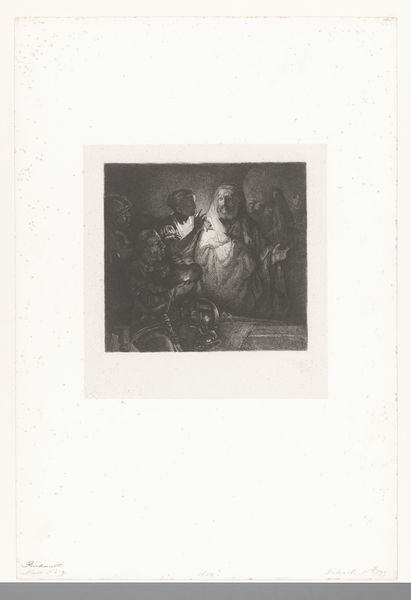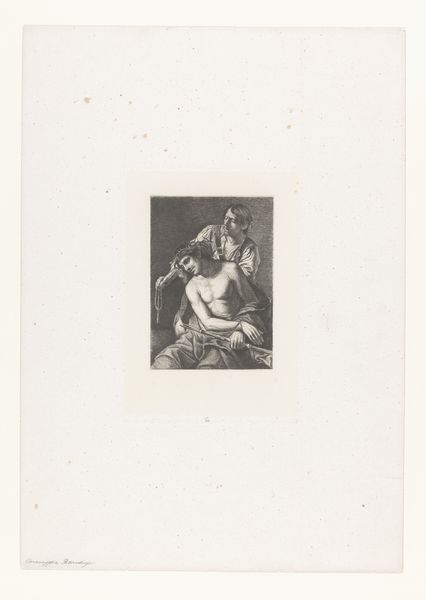
print, engraving
#
portrait
# print
#
figuration
#
11_renaissance
#
line
#
northern-renaissance
#
engraving
Dimensions: height 53 mm, width 37 mm
Copyright: Rijks Museum: Open Domain
Editor: Here we have "Dansend paar," or "Dancing Couple," a print made in 1538 by Heinrich Aldegrever. It's incredibly detailed given the size. It's an intimate depiction, but the figures seem a little stiff. What catches your eye in this piece? Curator: I immediately notice the density of lines and the remarkable labor involved in creating this engraving. Consider the cultural context: prints like this were relatively accessible. This image reproduces courtly fashion, making it available for a wider consumption. The detail elevates "craft" into "art," blurring class boundaries through its very existence. Editor: That's fascinating! I hadn't considered how the print medium itself plays into the subject matter. Do you see a message being conveyed through the clothing and adornment of the figures? Curator: Absolutely. Look at the elaborate folds in the woman's dress, the man’s patterned stockings. These details showcase the skill of the artist, but they also document the emerging merchant class’s aspiration towards aristocratic style. The image then becomes evidence of material aspirations of the time, fueled by nascent capitalism. The “dance” here can also be the complex ballet of social and economic negotiation. How might we look at these images differently now? Editor: Wow, I didn't consider that! This piece has layers I wouldn't have seen at first glance, and now I wonder if it says something about our present relationship to accessible consumerism. Curator: Precisely! Understanding the means of production, materials, and social context gives this work continuing relevance.
Comments
No comments
Be the first to comment and join the conversation on the ultimate creative platform.
